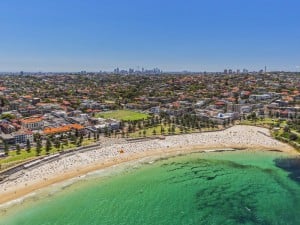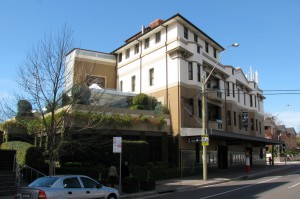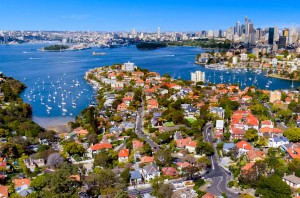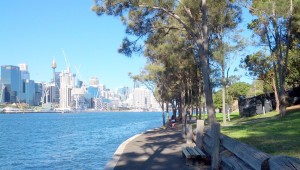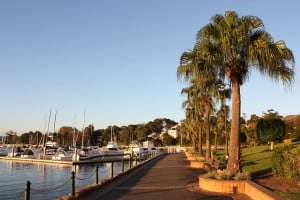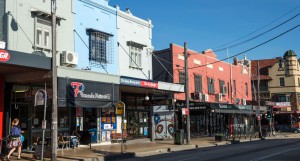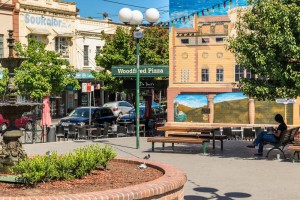[ad_1]
Please use the menu below to navigate to any article section:
Where are the best locations to invest in Sydney property in 2022?
The latest Corelogic stats show that Sydney house values grew 4.3% over the last quarter and 25.8% over the last year.
Australia’s most expensive capital city has also been the city that has seen property prices continue to rise strongly and steadily.
The resurgence of the buyer and seller interest in the Sydney property market has meant that auction clearance rates have consistently been in the high 70% – 80% range suggesting there are more buyers than there are sellers and this always leads to higher Sydney home prices.
Here we have pulled together the latest data on the median property price for Sydney.
Median property prices for Sydney
| Median/average value/price | MoM change | QoQ change | Annual change | |
| Capital city dwellings | $1,090,276 | 0.9% | 4.3% | 25.8% |
| Capital city houses | $1,360,543 | 1.0% | 4.7% | 30.4% |
| Capital city units | $837,169 | 0.7% | 3.4% | 15.2% |
| Regional dwellings | $667,577 | 2.4% | 6.6% | 29.1% |
Source: Corelogic, 1 December 2021
But there is still plenty of growth and opportunity left in the Sydney housing market.
This means as an investor, if you buy the right investment property in the right location, you could be primed to supercharge growth.
As always, not all Sydney suburbs will perform the same, and if history repeats itself some properties will increase in value significantly moving forward while others will underperform.
So this blog is going to be a little different from my other blogs.
Purely because I write this blog with a level of hesitation.
And the reason I have a level of hesitation is that whenever I see a blog written with the title “Top Hotspots for 2021” or “Property Investment Hotspots” it usually makes me cringe.
So let me preface by saying… this is NOT one of those blogs.
You see, being a property strategist means that I must approach every client’s position not only strategically but individually.
Every client has unique circumstances, goals and aspirations and there is never a blanket approach to investing.
Furthermore, I do not believe in hotspots or investing in an area just because it is expected to be the “Next Best Thing”.
“Hot-spots” tend to be “not-spots” and I’m a long-term investor, meaning I take calculated risks, I do not gamble.
Therefore, providing a macro strategy about the Top Sydney suburbs for 2021 is not as easy as it sounds.
So, let’s approach this with the following expectations:
- The suburbs I have featured have all been strong and stable suburbs that have both shown consistent historical growth but also have the right demographics to suggest future long term growth.
- The suburbs I feature are all located within the inner-middle rings of Sydney so that we can avoid any hot-spotting or speculative investing. These are all proven investment grade suburbs.
- Yes, there are some suburbs outside of this list that has shown higher short term growth but the suburbs listed are long term performers based on a number of metrics intended for safe and long term growth, not short term and risky “get rich quick” approach.
- Every client I see may be provided with a different recommendation based on their circumstances and personal goals.
And Covid reminded us of the importance of neighbourhood
The ability to work, live and play all within 20 minutes’ reach is the new gold standard desirable lifestyle.
It seems that in our new “Covid Normal” world, people love the thought that most of the things needed for a good life are within a 20-minute public transport trip, bike ride or walk from home.
Things such as shopping, business services, education, community facilities, recreational and sporting resources, and some jobs.
But this is nothing new…the rise of the 20-minute neighbourhood started long before Covid19.
You will find these are often in the gentrifying aspirational lifestyle suburbs of our capital cities and people will pay a premium to either own a property in these locations or rental property in these locations.
Many inner suburbs of Australia’s capital cities and parts of their middle suburbs already meet a 20-minute neighbourhood test.
However very few of the outer suburbs would do so.
Follow the demographics
According to leading demographer Bernard Salt, the coronavirus has changed the Australian workforce and not just by prompting adaptation to new technology like Zoom calls and triggering a work-from-home movement, but also by rigidly dividing the nation according to skill sets.
The Australian Bureau of Statistics classifies every job according to one of five skill levels with Skill Level 1 being the most skilled.
It is well recognised that the rich – such as people with a Skill Level I job – are getting richer, and at the other end of the spectrum, Skill Level 5 jobs requiring little or no previous work experience (like general sales assistant, kitchen hand) are experiencing no wages growth.
A Skill Level 1 job requires a bachelor’s degree or higher, or the equivalent of at least five years’ training.
People with these types of jobs will earn more income and be able to afford to pay more for their properties.
The pandemic cricket demand for skills in finance (accounting), risk management (solicitors), computer programming and many other skill levels one jobs.
However, the story for the balance of the workforce has been quite different.
So understanding where the skill level one worker lives in Sydney is critical and be seen in the following graphic provided by Bernard Salt in The Australian.
Now that all that is out of the way… let’s get into it
This list will serve as a very useful guide for investing in the Sydney property market in 2022 – for long term growth as an experienced investor.
This list will also help you avoid making any costly mistakes.
Now that I think of it, I feel like I am giving away quite a bit of intellectual property with this list however if it adds value than I have achieved my goal.
Each suburb is featured below:
- Is within 15km of the CBD
- Exceeds the Australian median household income of $1164.60, suggesting they all have an above-average household and disposable income.
- Has a DSR Score (Demand Supply Ratio) of Good or Above Average
- Has a population in excess of 6500
- Is ‘Very Walkable’ with a Walk Score of 70+
List of 15 Investment Grade Sydney suburbs
They are in no particular order however I have provided a ranking based on a number of metrics towards the end of the blog.
But remember… not all properties in the suburbs will make investment great properties, and even within the suburbs still be certain locations that must be avoided and other neighbourhoods which will outperform.
1. Coogee
Coogee is a gentrified coastal suburb South-East of Sydney CBD which will see the benefits of infrastructure projects over 2020.
The South-East Light Rail project is a $2.2B project and will see a 12km light rail network connect Circular Quay to Kingsford.
In addition to the light rail, a $5M upgrade of the Coogee Bay Road town centre commenced in September 2018.
- Distance from CBD: 8km South East
- Total population: 14,012
- Median Household Income: $2099 (weekly)
- Walk Score: 79 – Very Walkable
2. Kingsford
Kingsford is a residential suburb, South East of Sydney CBD and situated directly south of the University of New South Wales.
It has cultural amenities along Anzac Parade and Gardners Road and is less than 5 km from Coogee Beach.
Kingsford will also benefit from the South-East light rail project with a direct connection to the CBD.
- Distance from CBD: 7km South East
- Total population: 14,100
- Median Household Income: $1227(weekly)
- Walk Score: 82 – Very Walkable
3. Kensington
Kensington is located South-East of Sydney CBD in the local government area of the City Of Randwick.
Kensington lies to the immediate south of Moore Park and west of Randwick Racecourse.
The principal landmarks of the suburb are the main campus of the University of New South Wales, National Institute of Dramatic Arts (NIDA) and the exclusive Australia Golf Club.
Kensington will also benefit from the South-east light rail project.
- Distance from CBD: 6km South East
- Total population: 12,776
- Median Household Income: $1498(weekly)
- Walk Score: 81 – Very Walkable
4. Maroubra

Maroubra is the largest suburb in the area governed by Randwick City Council in both area and population.
- Distance from CBD: 10km South East
- Total population: 29,594
- Median Household Income: $1428(weekly)
- Walk Score: 74 – Very Walkable
5. Neutral Bay
Neutral Bay is a harbourside suburb on the Lower North Shore of Sydney.
It is north of Sydney CBD in the local government area of North Sydney Council.
Surrounding suburbs include Cammeray, Milsons Point and Cremorne.
- Distance from CBD: 1.5km North
- Total population: 9384
- Median Household Income: $2073(weekly)
- Walk Score: 85 – Very Walkable
6. Cammeray
Cammeray is a suburb on the Lower North Shore of Sydney and is located North of Sydney CBD.
The majority of residences are in the form of stand-alone or semi-detached, single or double-storey houses.
Many of the quieter streets are lined with trees and have nature stips.
This gives Cammeray a pleasant green look.
- Distance from CBD: 5km North
- Total population: 6783
- Median Household Income: $2239(weekly)
- Walk Score: 85 – Very Walkable
7. Balmain
Balmain is an affluent neighbourhood west of Sydney CBD with a trendy restaurant scene.
Relaxed pubs and cafes occupy Victorian buildings on Darling Street, alongside boutique stores, artisan bakeries and happening eateries.
Well-heeled families, artists and media figures reside in the restored sandstone workers’ cottages lining the leafy streets and stalls at Saturday’s Balmain Markets sell organic food, crafts and fashion.
- Distance from CBD: 5km West
- Total population: 9783
- Median Household Income: $2456(weekly)
- Walk Score: 93 – Walkers Paradise
8. Rozelle
Rozelle is a gentrified residential suburb in the inner-west of Sydney CBD.
Strong in cultural amenities with cafes and restaurants along Darling Street, it is a destination suburb due to its boutique stores and eateries.
- Distance from CBD: 4km West
- Total population: 7919
- Median Household Income: $2598(weekly)
- Walk Score: 84 – Very Walkable
9. Dulwich Hill
Dulwich Hill is a suburb in the Inner West of Sydney is located southwest of the Sydney CBD.
Dulwich Hill stretches south to the shore of the Cooks River and is an established residential area with many examples of federation Architecture.
The streets are wider than many inner-city suburbs and houses are bigger than some older, neighbouring suburbs such as Petersham.
- Distance from CBD: 7.5km South-West
- Total population: 12,981
- Median Household Income: $1540(weekly)
- Walk Score: 84 – Very Walkable
10. Summer Hill
Summer Hill is a residential suburb located west of Sydney CBD with surrounding suburbs being Lewisham, Haberfield and Ashfield.
Summer Hill has a mix of Federation-era houses, with medium density apartment blocks near the railway station.
It has a family-friendly vibe and village atmosphere while still having proximity to Sydney CBD.
The local council has defined a village character for the suburb and Summer Hills personifies Inner West living at its finest with plenty of local eateries, world-class cafes and green spaces and parks.
Summer Hill is a suburb rich in heritage with more than one hundred properties being heritage listed.
- Distance from CBD: 7km West
- Total population: 6586
- Median Household Income: $1570(weekly)
- Walk Score: 77 – Very Walkable
11. Marrickville
Marrickville is a gentrified suburb in the Inner West of Sydney and located south-west of the Sydney CBD.
It is the largest suburb in the inner-west and sits on the northern bank of the Cooks River.
It is a diverse suburb consisting of both low and medium density residential, commercial and light industrial areas.
Many Marrickville homes are detached or terraced Victorian houses built in the late 19th century while many others were built in the Federation style in the early 20th century.
- Distance from CBD: 7km South-West
- Total population: 24,612
- Median Household Income: $2324(weekly)
- Walk Score: 80 – Very Walkable
12. Ashfield
Ashfield is a suburb in the Inner West of Sydney and located south-west of Sydney CBD is relatively high for Australia, with the majority of the area’s dwellings being a mixture of mainly post-war low-rise apartments and federation-era detached houses.
Amongst these are a number of grand Victorian buildings that offer a hint of Ashfield’s rich cultural heritage.
- Distance from CBD: 8km South-West
- Total population: 22,190
- Median Household Income: $1314(weekly)
- Walk Score: 75 – Very Walkable
13. Newtown
Newtown is a diverse, bohemian neighbourhood that bustles with activity day and night.
Shoppers head to King Street’s indie bookshops and thrift stores.
Hip bars and eateries with multicultural fare cater to locals and University of Sydney students and The Enmore Theatre hosts comedy revues and live music.
Restored Victorian buildings and street art, including a mural of Martin Luther King, round out the scene.
- Distance from CBD: 4km South-West
- Total population: 14,148
- Median Household Income: $1753(weekly)
- Walk Score: 95 – Walkers Paradise
14. Kogarah
Kogarah is a residential suburb of southern Sydney located south of the Sydney CBD and is considered to be the centre of the St George area.
Kogarah’s main shopping area is located around Kogarah railway station on Railway Parade, Regent Street and on the opposite side of the railway line on Station Street.
- Distance from CBD: 14km South
- Total population: 12,763
- Median Household Income: $1238(weekly)
- Walk Score: 84 – Very Walkable
15. Bexley
Bexley is a suburb in southern Sydney located south of the Sydney CBD in the local government area of the Bayside Council and is part of the St George area.
Bexley contains a mixture of residential, commercial and light industrial developments and its main shopping strip (usually known as the ‘Bexley Shopping Centre’) is located on Forest Road.
- Distance from CBD: 14km South
- Total population: 19,067
- Median Household Income: $1358(weekly)
- Walk Score: 71 – Very Walkable
Suburbs ranked based on Distance from CBD
| Suburb | Distance from CBD | |
| 1 | Neutral Bay | 1.5km |
| 2 | Rozelle | 4km |
| 2 | Newtown | 4km |
| 3 | Balmain | 5km |
| 3 | Cammeray | 5km |
| 4 | Kensington | 6km |
| 5 | Kingsford | 7km |
| 5 | Summer Hill | 7km |
| 5 | Marrickville | 7km |
| 6 | Dulwich Hill | 7.5km |
| 7 | Coogee | 8km |
| 7 | Ashfield | 8km |
| 8 | Maroubra | 10km |
| 8 | Kogarah | 14km |
| 9 | Bexley | 14km |
Suburbs ranked based on Walk Score
| Suburb | Walk Score | |
| 1 | Newtown | 95 |
| 2 | Balmain | 93 |
| 3 | Neutral Bay | 85 |
| 3 | Cammeray | 85 |
| 4 | Rozelle | 84 |
| 4 | Dulwich Hill | 84 |
| 4 | Kogarah | 84 |
| 5 | Kensington | 81 |
| 6 | Marrickville | 80 |
| 7 | Coogee | 79 |
| 7 | Kingsford | 79 |
| 8 | Summer Hill | 77 |
| 9 | Ashfield | 75 |
| 10 | Maroubra | 74 |
| 11 | Bexley | 71 |
As a property investor and similarly as a homeowner, it is important to note that location accounts for 80% of the properties performance and 20% come from the property itself.
Meaning that with the correct location and property selection you can find an investment-grade asset that well and truly outperforms the averages in growth.
Changes in Sydney property prices over the past two years
Domain research reveals that across Sydney, from the trough of early 2019 through to the end of 2020, prices fell in almost every Sydney suburb.
But any house price fall instigated by the coronavirus pandemic was short-lived.
By the end of 2020, the median hit a new record high of $1,211,488, which is just over $13,000 above the previous peak mid-2017.
Over the past two years, property prices have risen across almost all Sydney suburbs, with 94% enjoying property price growth, and a huge 43% of suburbs even seeing double-digit annual growth.
Leading the suburbs seeing the greatest growth was Alexandria with prices soaring by 30.6%.
Meanwhile far behind the pack was Sydney’s suburb of Marsfield which suffered a 10.1% decline in property prices over the same period.
Elsewhere, Blackheath and Palm Beach are the only two suburbs that have shown stable and continued annual growth over the past two years.
Other suburbs have shown very minor annual price falls, largely Central Coast suburbs such as Charmhaven, Hamlyn Terrace and Wadalba, the research reveals.
ALSO READ: Sydney property market forecast to grow
[ad_2]
Source link





